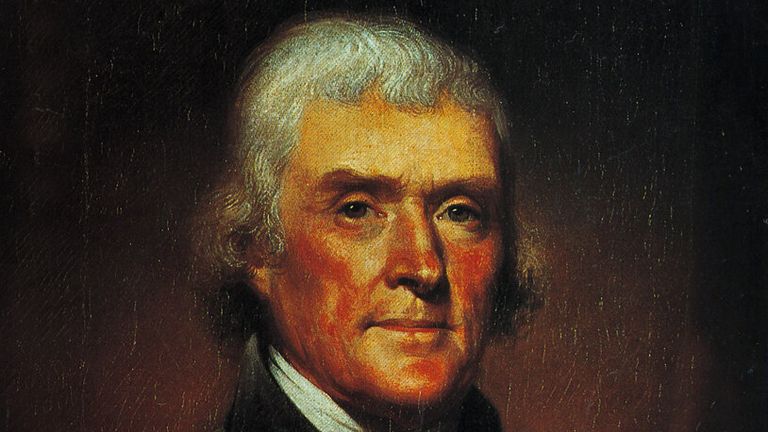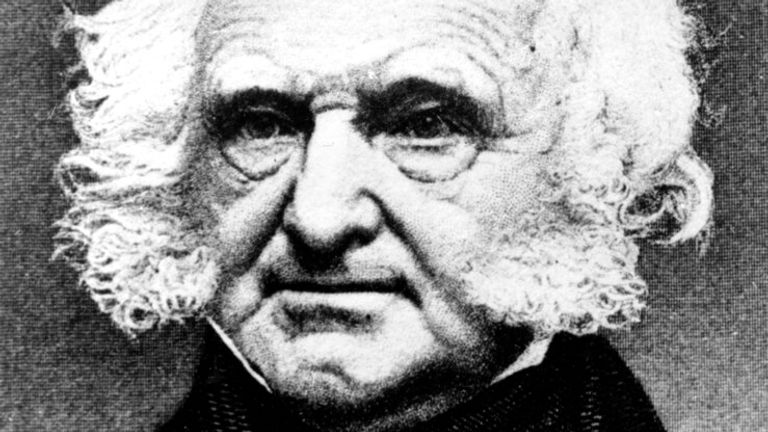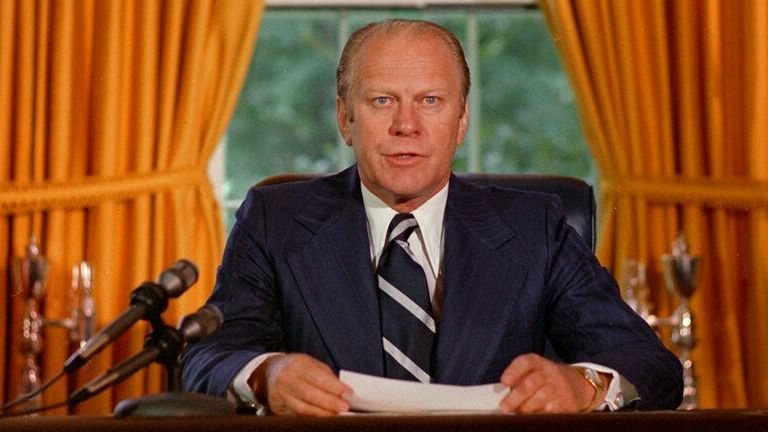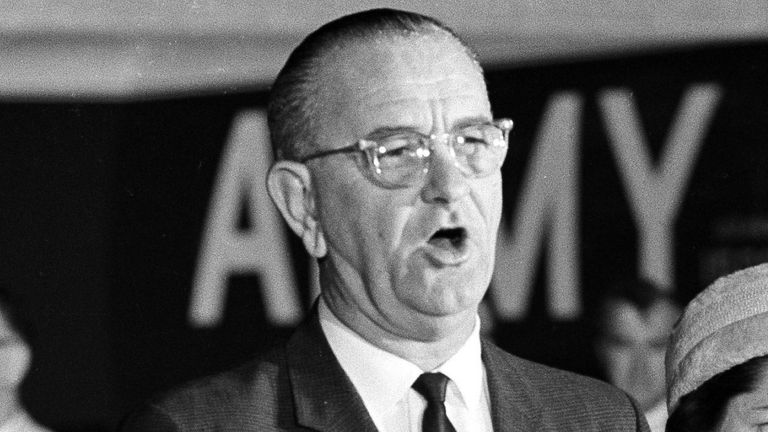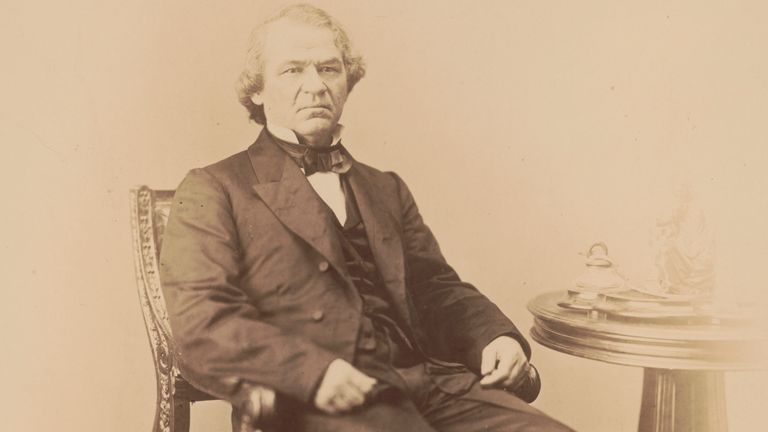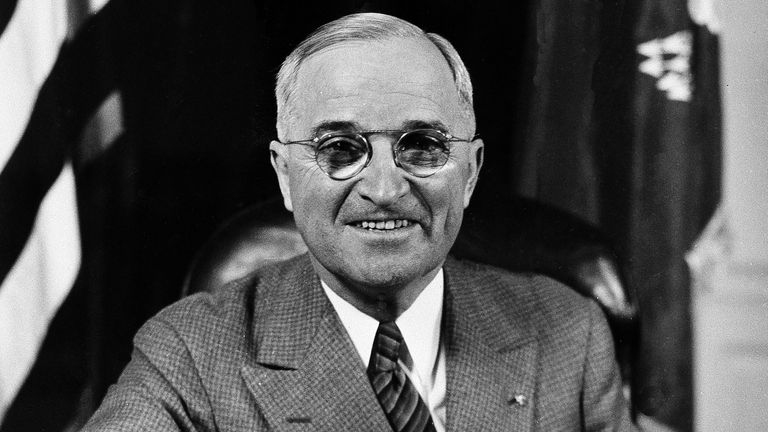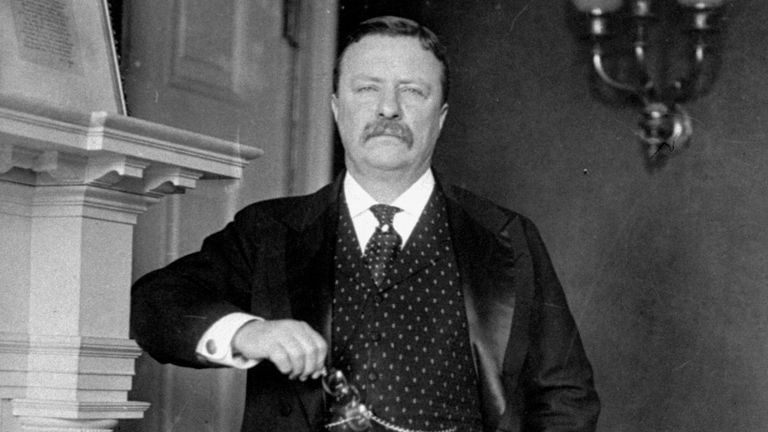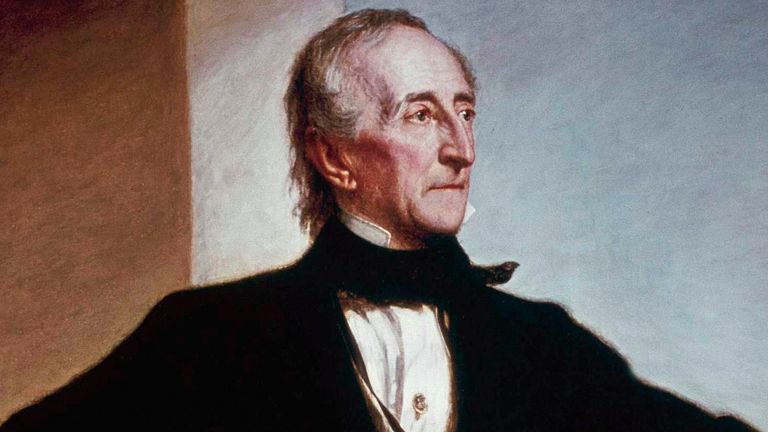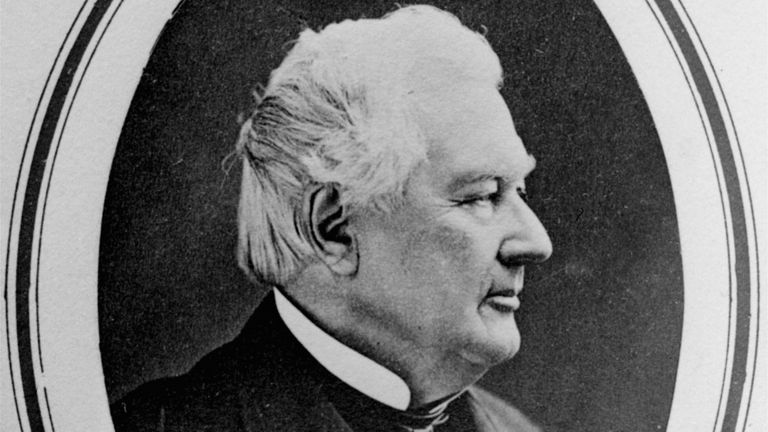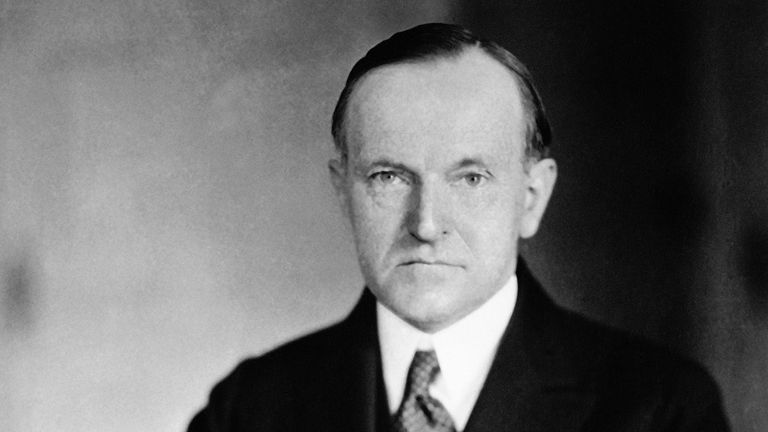The one-term (or less) vice presidents who went on to be president | US News
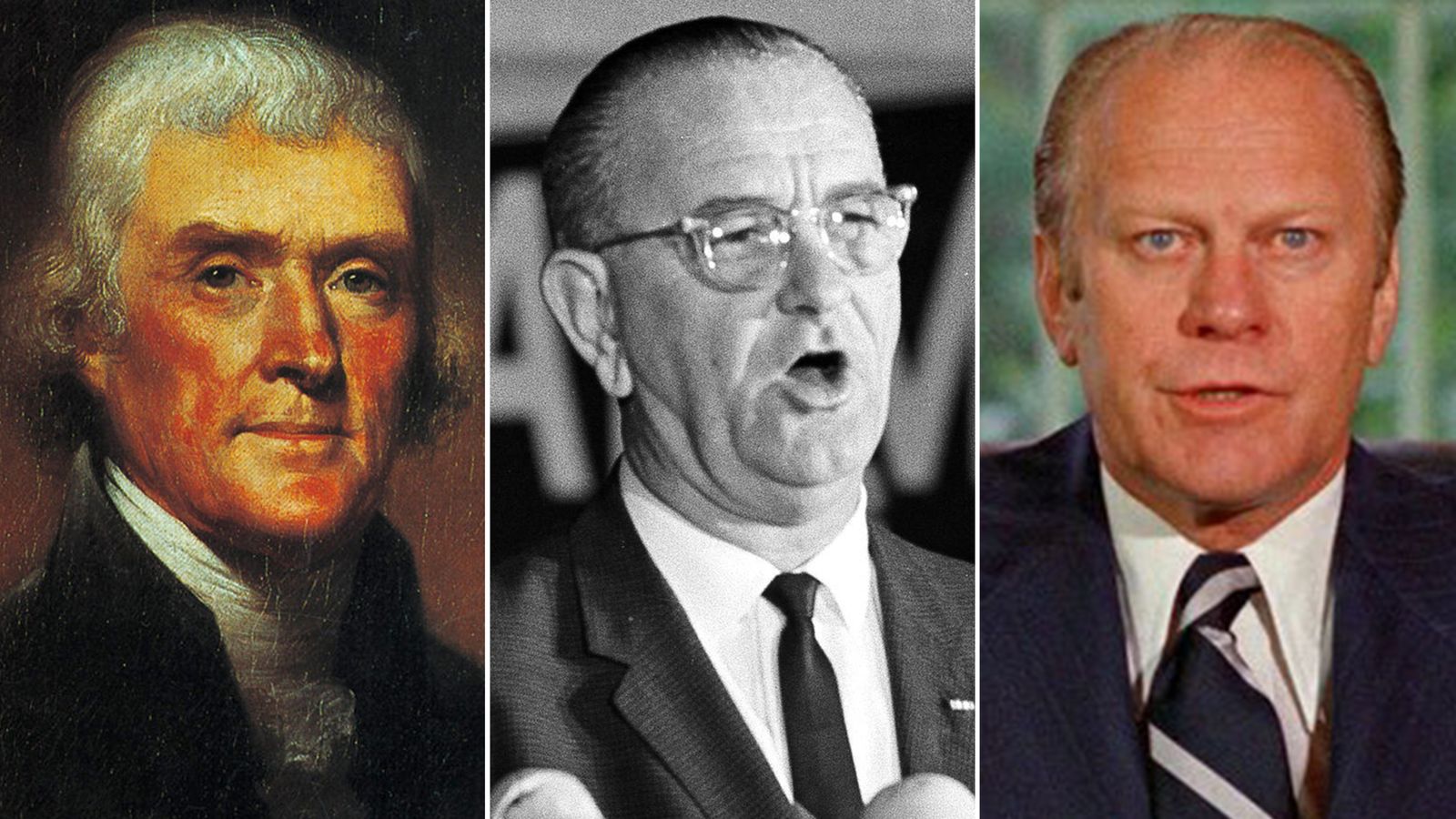
If she wins on 5 November, Kamala Harris will be the third US vice president in history to become president after a single term.
Thomas Jefferson and Martin Van Buren assumed the Oval Office after serving a term as vice president. Lyndon B. Johnson, Harry Truman, and Theodore Roosevelt were among the eight vice presidents to take the top job before facing an election due to the death of their president, while Gerald Ford took over after Richard Nixon resigned.
Here we look back at the VPs who replaced their bosses after one term or less.
Thomas Jefferson
Jefferson was the US’s second vice president.
Having worked as a planter in Virginia and then as a lawyer, he entered politics in the 1770s.
At the age of 33 in 1776, while serving as a delegate for his home state, he drafted the Declaration of Independence, which began the path to his founding father status.
He co-founded the Democrat-Republican Party with James Madison in the early 1790s and became governor of Virginia before serving in George Washington’s cabinet.
Jefferson was US minister to France before he was made the first secretary of state, which he resigned from in 1793 following tensions over his sympathies around the French Revolution.
Read more
The VP debate could swing the election
Analysis: Harris’s bid for the White House is serious
How did Trump’s claims that immigrants eat pets start?
He got the vice president job under the previous rules, whereby the candidate with the second largest number of votes was given the role, after he lost to federalist John Adams by three votes in 1796.
He served as Adams’s VP from 1797 to 1800, despite being his opponent.
And it was his tie with fellow Democrat-Republican Aaron Burr that created the current system for VP.
When the two men received the same number of votes in the 1800 election the House of Representatives was forced to choose between them. To stop it from happening again, the 12th Amendment was added to the Constitution in 1804, creating a separate vote for the vice president.
Jefferson served as president for two terms and is highly regarded for his promotion of freedom of speech, religious freedoms, and the successful acquisition of the state of Louisiana from the French. Although he acknowledged his past as a slaveowner, he remained tied to the system.
Martin Van Buren
Van Buren was one of the founding members of the Democratic Party – elected the eighth vice president by Andrew Jackson at the 1832 national convention.
Before that he had a successful legal career in New York, during which he ascended to the office of attorney general – before becoming a senator and briefly governor.
He was a trusted adviser of Jackson who rewarded him with the role of secretary of state and minister for Great Britain before nominating him as VP.
At 5ft 6in he was affectionately known as the „Little Magician“.
When Jackson decided against a second term, Van Buren received the Democratic nomination and beat the Whig Party to the presidency in 1836.
His inauguration speech lauded America as a great experiment for the rest of the world. But just a year into his term, the Panic of 1837 saw hundreds of banks and businesses go bust – and five years of depression set in. Van Buren blamed the recklessness of businesses and creditors and focused on maintaining government solvency for the rest of his term.
He was beaten by the Whigs in the 1840 election – but remained an influential figure, particularly within the anti-slavery moment.
Van Buren failed to secure the Democratic nomination in 1844 – and ran unsuccessfully for the anti-slavery Free Soil Party in 1848.
Gerald Ford
Ford is the only person in US history to serve as both president and vice president without winning an election.
He is still the only person to have assumed the vice presidency via the 25th Amendment – in October 1973 when Spiro Agnew resigned having pleaded no contest to tax evasion.
Ford spent 25 years in Congress, going from a Michigan Representative to House minority leader. Before Agnew’s resignation, he unsuccessfully rallied fellow Republicans to make him House Speaker.
He only spent a year as VP before the Watergate scandal and Richard Nixon’s impending impeachment trial resulted in his resignation in October 1974.
Ford said in his acceptance speech: „I assume the presidency under extraordinary circumstances… This is an hour of history that troubles our minds and hearts.“
In a bid to squash controversy over Watergate, Ford officially pardoned Nixon a year into office.
At home he faced the worst economic outlook since the Great Depression of 1929 – and abroad he was tasked with restoring US influence after its failures in Vietnam and Cambodia.
He won the Republican nomination in 1976 but lost the election to Jimmy Carter, who thanked him for „all he has done to heal our land“ in his inauguration speech.
Lyndon B. Johnson
John F. Kennedy chose Senate majority leader and Texan Democrat Lyndon B. Johnson as his running mate in the 1960 election.
He is considered to have had relatively little influence during his time as vice president – but this changed when JFK was assassinated in 1963.
Johnson was only three cars behind the president when he was shot dead in Dallas – and, uninjured, he took the oath to replace him as president on Air Force One the same afternoon.
When he ran for re-election the following year he won the largest popular vote share since the 1820s – beating Republican Barry Goldwater.
His Great Society project saw investments in healthcare, education, and the redevelopment of cities, as well as pushing for civil rights in voting, business, and housing.
Despite these successes, his hardline tactics in Vietnam were unpopular and he decided against re-running in 1968.
Andrew Johnson
Amid the American Civil War, Abraham Lincoln chose Tennessee Senator Andrew Johnson as his vice president in 1864.
Johnson remained in the Senate in spite of Tennessee’s secession from the rest of the country in 1861. Lincoln made him military governor of the state in 1862.
A year after the National Union Party’s victory under Lincoln, he was assassinated by a confederate sympathiser and Johnson took over – despite being targeted himself.
While he was praised in the north for his commitment to the Union, his failure to secure the rights of former slaves from the south was heavily criticised.
The Radical Republicans were determined to carry out their own programme of post-war reconstruction, placing southern states under military rule and passing the Civil Rights Act, making black people American citizens and outlawing their discrimination.
Eventually they placed restrictions on the president, which resulted in impeachment proceedings against Johnson, which he survived by one vote in 1868.
In 1875, Johnson became the first former president to return to the Senate – before his death a few months later.
Harry Truman
Harry Truman was only vice president for three months in 1944 when he became president during the Second World War.
Franklin D. Roosevelt’s death from a brain haemorrhage saw his running mate become one of the most consequential US presidents of all time – as it was Truman’s decision to drop atomic bombs on Japan in a bid to end the war.
He continued to make big moves on the world stage, confronting both the Soviet Union and communist China during the Cold War, while domestically, he battled inflation and goods shortages.
The former Missouri senator ordered US troops to South Korea’s defence after it was invaded by North Korea in 1950 – but the cost in fatalities made him unpopular with the public and he decided not to run again.
Theodore Roosevelt
Teddy Roosevelt was known as a Spanish War hero and New York governor before the Republicans chose him as William McKinley’s vice president in 1900.
Known for being more progressive than the party line, the GOP hoped to keep him on side with the VP nomination. But McKinley was assassinated by an anarchist six months later and Roosevelt took his place, becoming the youngest president in US history.
Once re-elected in 1904, he pursued a progressive agenda with his Square Deal programme of social reform and industry regulation. Abroad he spearheaded the building of the Panama Canal, championed the right to intervene in Latin America, and won a Nobel Peace Prize for his diplomacy during the Russo-Japanese War.
He failed to win a third term when he ran for his own Progressive Party, which he nicknamed the Bull Moose Party, losing to his successor William Howard Taft in 1912. He survived an assassination attempt the same year.
John Tyler
Tyler – a former Virginia representative and governor – was William Henry Harrison’s vice president for the Whig Party in 1840. The Whigs were the other major party alongside the Democrats during the mid-19th century.
Harrison died of a fever just 32 days into his presidency, making Tyler the first vice president to become leader after the death of a president.
Tyler wanted to keep his cabinet for continuity – but almost all of them resigned and he was expelled from the Whigs after he vetoed a bill for the creation of the Bank of the United States. He decided not to run again in 1844 and was a representative in the Southern House, created after secession, when he died in 1862.
Millard Fillmore
Former lawyer and New York representative Millard Fillmore became the 13th US president when Zachary Taylor died two years into Fillmore’s vice presidency in 1850. As a Whig Party member, he also became the last president not to be either a Democrat or a Republican.
He presided over the Compromise of 1850 – a series of laws around the expansion of slavery, including the admission of California to the Union, and the abolishment of the slave trade in Washington DC.
Ultimately the Compromise paved the way to the Civil War – and when the Whigs dissolved Fillmore refused to join the Republicans, instead running as the Know Nothing Party candidate in 1852. He was defeated by Democrat Franklin Pearce.
Chester A. Arthur
Arthur was a former school principal from Vermont – and had no government experience when he was nominated as James Garfield’s Republican vice president in 1880.
Party members were therefore sceptical when he assumed the presidency on Garfield’s assassination a year later, particularly over potential factionalism.
He proved many wrong and made efforts at reform. He was criticised for passing the Chinese Exclusion Act, however, which banned Chinese immigrants and stopped them from becoming US citizens.
He lost the Republican nomination in 1884 but had been hiding a fatal kidney disease during his time in office and died two years later.
Calvin Coolidge
Coolidge, also from Vermont, was governor of Massachusetts before he was selected as Republican Warren Harding’s running mate in 1920.
Harding died of a heart attack in 1923 and Coolidge was sworn in by his father, who was a justice of the peace.
The following year he got his own mandate and won the 1924 election with the slogan „Keep Cool with Coolidge“.
An advocate of trickle-down economics, he cut taxes for the wealthy amid the ‚Roaring 20s‘. Economists later blamed him for failing to squash market speculation that led to the 1929 financial crash. His statement that he would not re-run at the next election was just one sentence: „I do not choose to run for President in 1928.“
Source link

